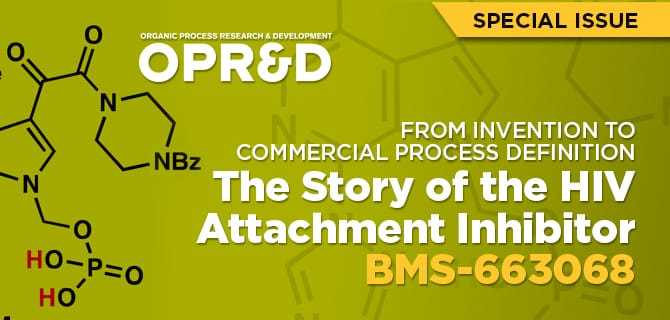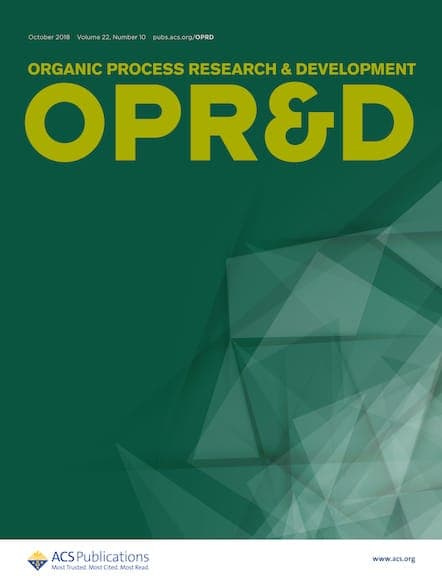Modern medicine is essential to the future survival of the human species. Talented and passionate chemists are essential to the ongoing fight to reduce human suffering by alleviating pain and curing infectious diseases. That fight continues against deadly diseases such as HIV. Yet the stories of these scientists and their work don’t always get the […]

Modern medicine is essential to the future survival of the human species. Talented and passionate chemists are essential to the ongoing fight to reduce human suffering by alleviating pain and curing infectious diseases. That fight continues against deadly diseases such as HIV. Yet the stories of these scientists and their work don’t always get the attention they deserve.
The latest special issue of Organic Process Research & Development features the story of BMS-663068– a potential medicine that blocks the entry of the HIV-1 virus into healthy cells. A team of process chemists from Bristol-Myers Squibb (BMS) discovered BMS-663068. Their work began in 2005, and by the time it was complete it would represent hundreds of years of effort from the combined team.
This special issue features nine articles highlighting the road to the discovery of BMS-663068 and charts the breakthroughs that paved the way for the development of the HIV attachment inhibitor.
The Stages of BMS-663068’s Development Include:
- Discovering the route to deliver the drug under extreme time constraints
- Constructing azaindole cores from simple pyrrole building blocks: An alternate strategy
- Overcoming the scale-dependence of the key Friedel-Crafts pyrrole acylation
- Pictet-Spangler conditions and aromatization strategy
- Regioselective installation of the C5 bromide
- Appending the oxalyl under phase transfer catalysis
- Installing triazole motifs via Ullmann couplings
- Phosphonoxymethylation protocol
- Converting the intermediate into BMS-663068
As Ming Yan and Phil S. Baran write in the editorial introducing the issue, “Legions of talented and passionate chemists toil away over the span of decades with the mission of providing cures to patients in an efficient and environmentally friendly way. Their victories go mostly unnoticed by the society they humbly seek to serve, with the details of exciting conquests mostly deposited into the quiet storm of the patent literature. In this regard, the Bristol-Myers Squibb chemists should be applauded for scholarly summarizing this huge body of work into such an educational and coherent set of must-read publications.”
